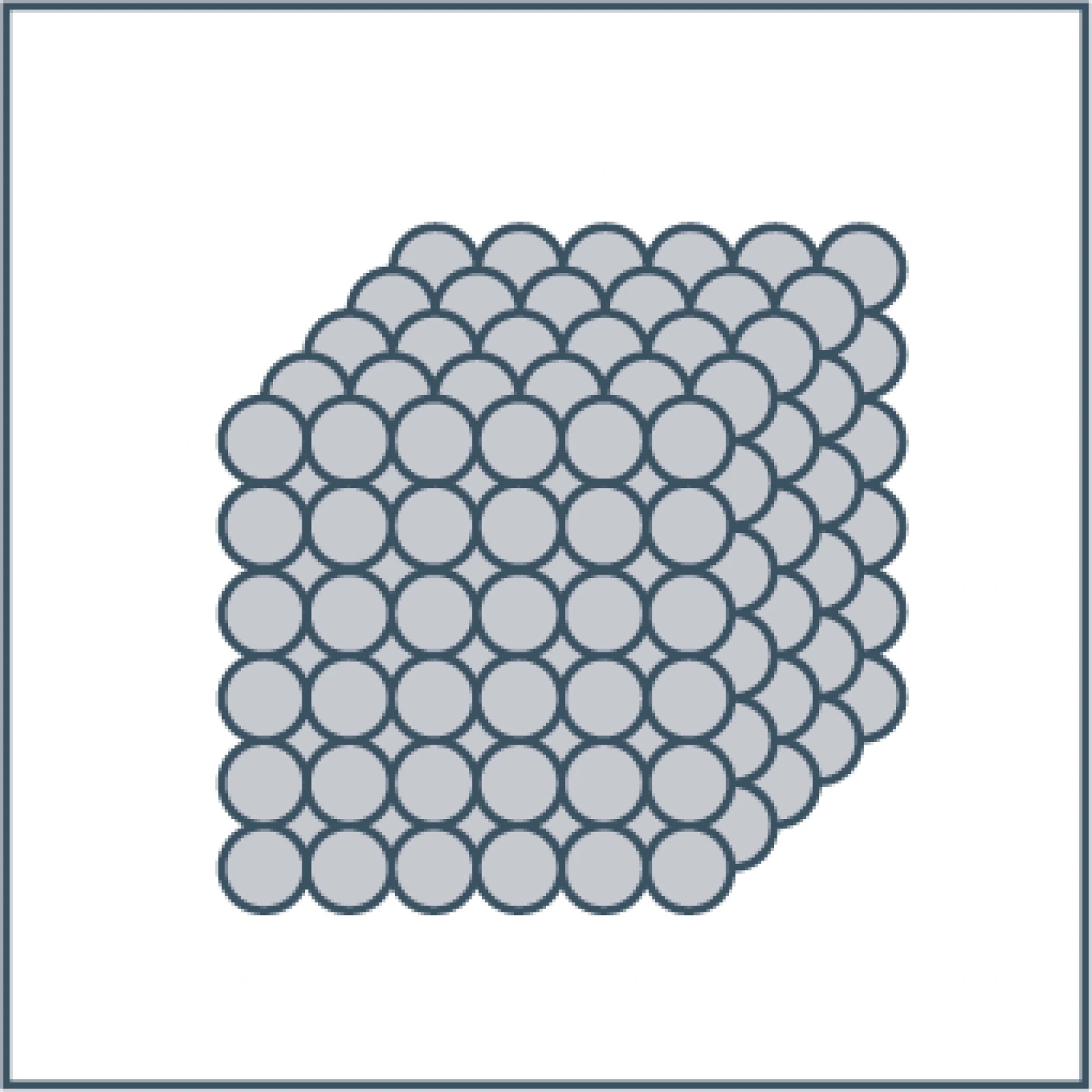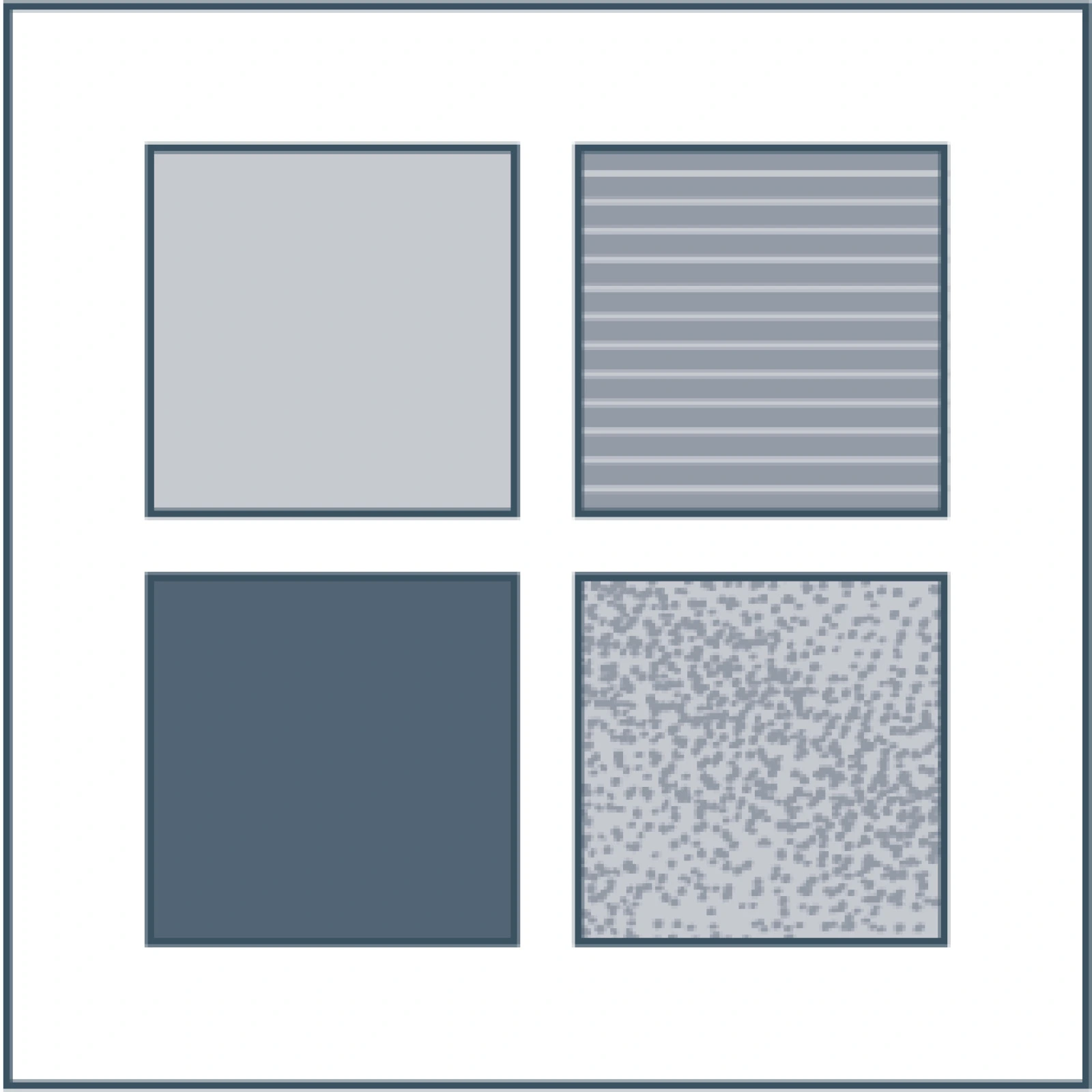Unique, formed millions of years ago at the bottom of the oceans, Blue Limestone of Hainaut is strewn with small fossils. Each piece bears its own history. Each piece is a unique example of its kind. It becomes magical when, due to the surface effects, without any process, it displays a whole range of textures and nuances. Even the most successful copies will not age as well as natural stone. From the intense EnoLuce to the delicate EnoSkin, the multiple tomes and numerous dimensions and applications offer a wide range of possibilities for you to compose your interior or exterior.
Our Stone
Blue Limestone of Hainaut: natural, local and sustainable elegance that stands the test of time
Blue Limestone

100% ‘petit granit’
Blue Limestone of Hainaut, from the Belgian subsoil, is a natural, authentic material whose origins dates back 350 million years, when our regions were submerged by a tropical sea. Trough sedimentation, the fossilised aquatic fauna -crinoids- and flora have become a homogeneous and very compact limestone rock.
A gift of nature, each stone is uniquely shaped. The strength of the rock and its glittering splinters are reminiscent of granite, which is why it is known as ‘petit granite'.

100% natural stone
100% Made in Belgium, Blue Limestone of Hainaut is environmentally friendly. It would be difficult to favour a more local product.
In fact, the blue stone can only be found in one specific carbonated geological vein. This particular vein runs from east to west across Belgium and comes close to the surface in the region of Soignies, in Hainaut, headquarters of the Belgian production.
Extraction and processing ‘Blue Limestone of Hainaut’ takes place at one single site in Soignies, Belgium, in the quarry of Carrières du Hainaut, minimising the ecological footprint of production thanks to the particularly short circuit.

A 100% sustainable material
Blue stone is a durable product par excellence: solid and non-porous, it has a maximum lifespan and offers many possibilities for reuse. No ceramic or composite imitation can compete with the unique, authentic living character of Blue Limestone of Hainaut. While foreign stones with a similar appearance and imitations are destined to be replaced over time, only genuine Belgian blue stone is further enhanced with the patina and is naturally resistant to wear and compression. It resists running water, bad weather and temperature fluctuations. These qualities are present in its natural state that holds up well over time.
The composition of the material
Nature of the stone
Bluestone is a fossiliferous crinoid limestone according to the nomenclature of PTV 844 - precision level 5, registered at the IBN on 23 September 2005 - (NBN EN 12670). This compact limestone of grey-blue colour and of upper Tournaisian stratigraphic age also corresponds to the descriptions written in the NIT 220 " La pierre bleue de Belgique dite Petit Granit d'âge géolo- gique tournaisien" and NIT 228 " Pierres naturelles " of the BBRI.
NIT 220 Definition
Belgian blue limestone, also called ‘petit granit’, is a calcite stone with a natural, more or less accentuated bluish-grey colour, characterised by the numerous remnants of crinoids. It is exclusively extracted in Belgium. ‘Petit granit’ is an established name and is appropriate due to the particularly sparkling, shiny aspect of the rock, recalling that of granite. It is preferable to call it ‘blue limestone of Belgium’ to distinguish it from other blue stones with a similar aspect extracted in other countries (mainly Ireland, China and Vietnam).
Macroscopic description
Bluestone is a compact blue-grey limestone, of sedimentary origin, resulting from the accumulation of innumerable fossilised crinoid articles and fragments cemented into a mass of microcrystalline calcite. The stone also contains other fossils such as shells (including brachiopods), corals and bryozoans. On exposure to the weather, the stone takes on a light grey patina.
Petrographic description
The stone to be worked is a bioclastic, crinoid dominant limestone. It is a pack stone, sometimes grain stone (DUNHAM classification) or a biomicrite (FOLK classification). The average composition is 96 to 99% carbonates, 0 to 1% quartz, 0.2 to 0.5% iron salts (mainly sulphides) and 0.2 to 0.4% organic carbon.
Proof of provenance
THE QUALITIES OF THE STONE
This timeless material appeals due to its elegance, sophistication and authenticity. Its solidity, non-porosity and longevity make it a durable stone. Its many qualities, present in its natural state, make it an unalterable rock. Choosing Hainaut Blue Stone means making the choice of a long-term investment and adding value to your property project.
THE QUALITIES OF THE STONE
THE VERSATILITY OF STONE
THE CREATIVE BENEFITS OF THE STONE
Authentic Blue Limestone
HOW CAN YOU BE SURE YOU’RE CHOOSING THE AUTHENTIC BLUE LIMESTONE OF HAINAUT?
With the globalisation of markets, Belgian blue stone-or petit granit-has witnessed the arrival of many stones of similar appearance, from Asia and elsewhere. Many take undue advantage of Blue Limestone of Hainaut’s excellent reputation. In the same way technology has made it possible to achieve ever more impressive imitation of natural materials such as wood and stone, it has never been able to achieve the technical and aesthetic performance of the authentic blue stone.
How can you see the real Blue Limestone of Hainaut and its imitation stones or similar stones of a lesser quality?
These foreign stones simply do not hold the same qualities. Some oxidise over time because they are not adapted to our applications (technical, frost/defrost cycles, weather conditions ...). The golden rule for lovers of authentic, superior quality natural stone – always ask for a certificate of origin.




























